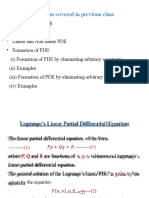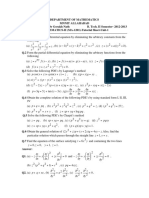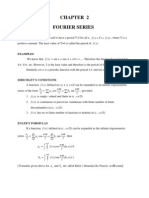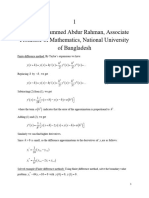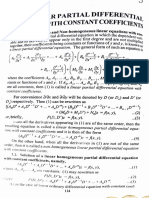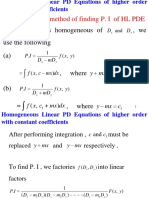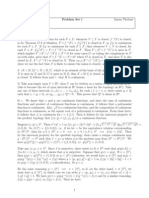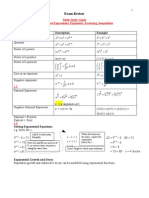0% found this document useful (0 votes)
1K views10 pagesGreen Function
The document summarizes the construction of Green's functions for two boundary value problems.
1) The Green's function for the differential equation y'' + λy = 0 with boundary values y(0)=0 and y'(π)=0 is constructed by finding the eigenfunctions and eigenvalues. The Green's function is given as Cnsin[(2n-1)x/2].
2) The Green's function for the differential equation U''(x) + λU(x) = X with boundary values U(0)=U(π/2)=0 is constructed. The Green's function is given as G(x,s) = [-2/π](x(π
Uploaded by
M. Danish JamilCopyright
© © All Rights Reserved
We take content rights seriously. If you suspect this is your content, claim it here.
Available Formats
Download as PDF, TXT or read online on Scribd
0% found this document useful (0 votes)
1K views10 pagesGreen Function
The document summarizes the construction of Green's functions for two boundary value problems.
1) The Green's function for the differential equation y'' + λy = 0 with boundary values y(0)=0 and y'(π)=0 is constructed by finding the eigenfunctions and eigenvalues. The Green's function is given as Cnsin[(2n-1)x/2].
2) The Green's function for the differential equation U''(x) + λU(x) = X with boundary values U(0)=U(π/2)=0 is constructed. The Green's function is given as G(x,s) = [-2/π](x(π
Uploaded by
M. Danish JamilCopyright
© © All Rights Reserved
We take content rights seriously. If you suspect this is your content, claim it here.
Available Formats
Download as PDF, TXT or read online on Scribd
/ 10










